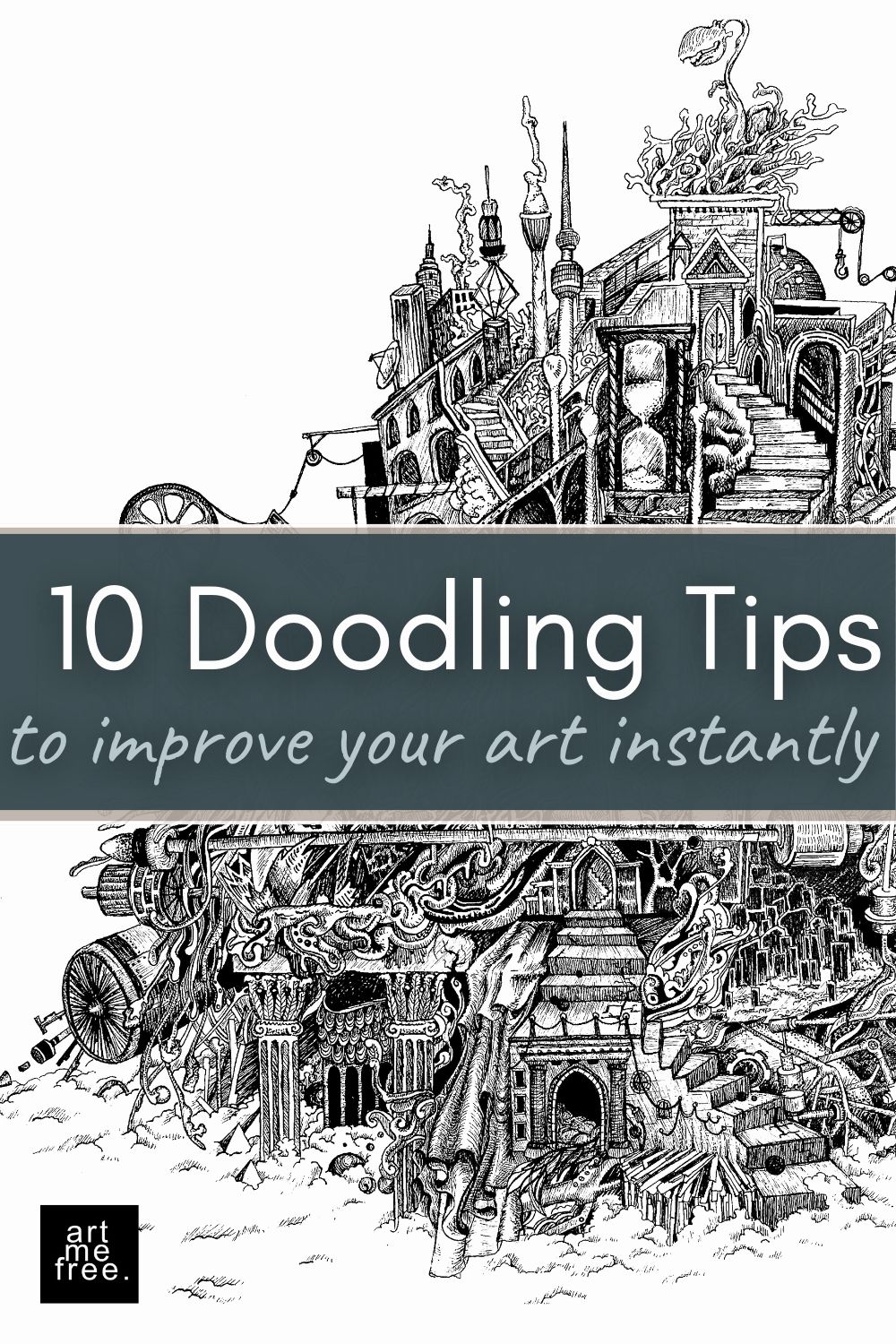
If you don’t know what to draw, look around your space and choose three random items—a clock, a window, a plant, a book, a lamp—whatever catches your eye. Then, add those elements to your doodle in your own style.
You can draw them as they are or integrate them into an abstract composition.
I used this technique in my piece “time step,” where I combined multiple everyday objects into one larger, complex doodle.
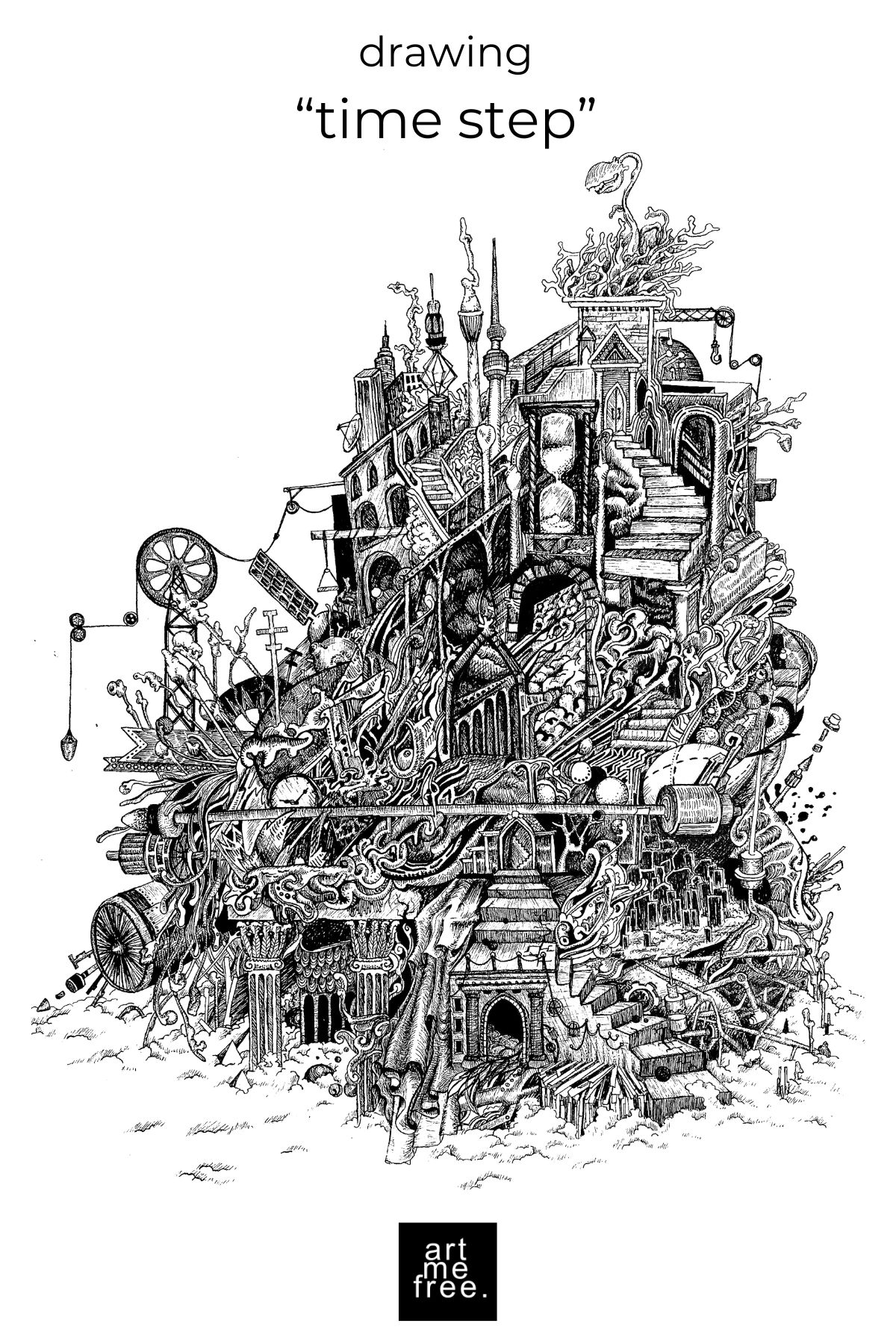
Instead of drawing an object exactly as it is, observe its form and use it as inspiration. Look at the curves, angles, or negative space and let that guide your doodle.
For example, a door handle could inspire a twisting vine, a radiator might turn into a repeating line pattern, or a chair leg could become a mechanical structure.
This technique helps create more abstract and interesting doodles while still being rooted in real-world inspiration.
Want to keep part of your doodle blank or create a sharp edge? Stick post-it notes on your paper before you start drawing. Once you’re done, simply remove them for a clean, crisp section that contrasts with the rest of your doodle.
This is great if you want to leave space for additional elements later, create structured compositions, or just experiment with negative space in your doodles.
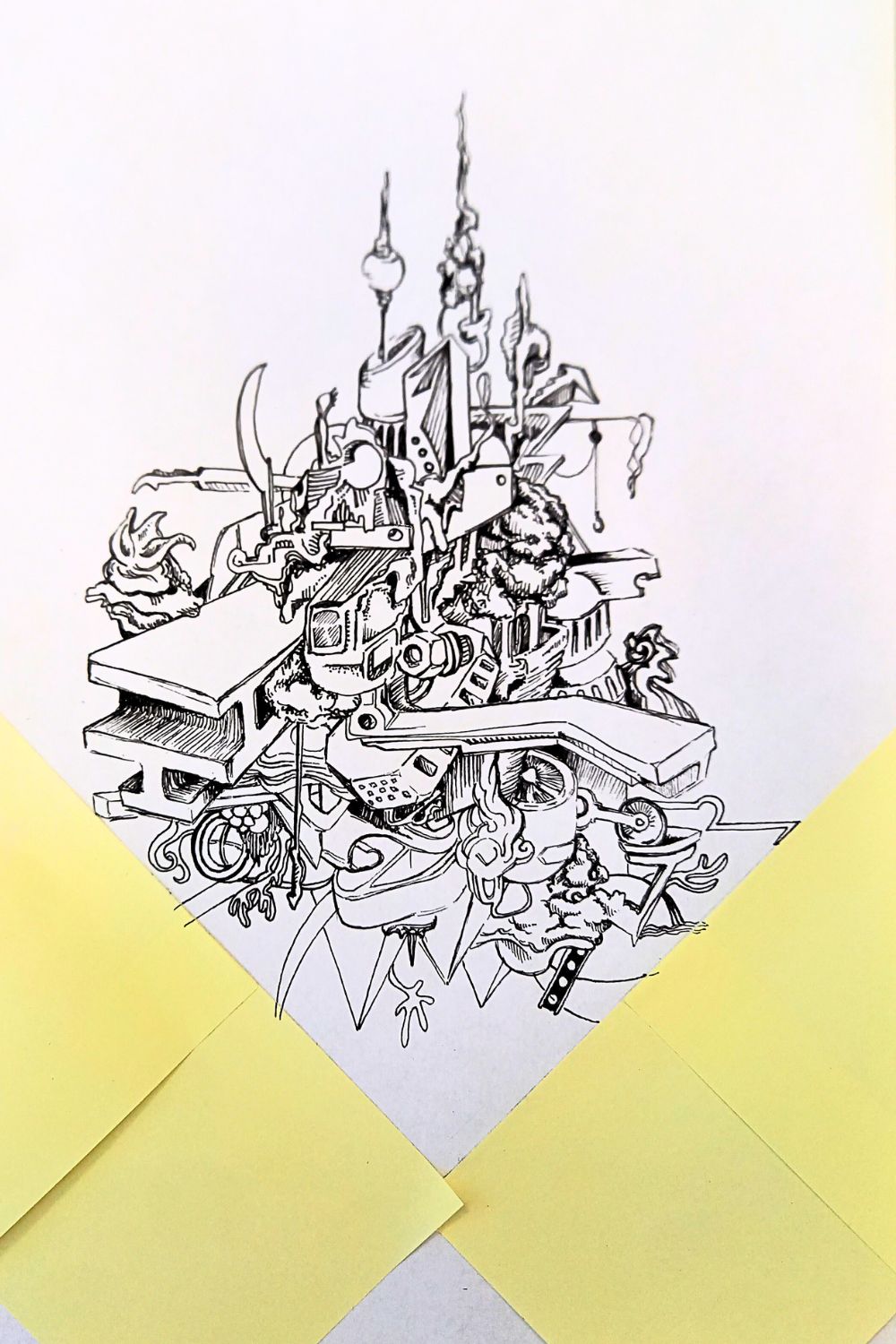
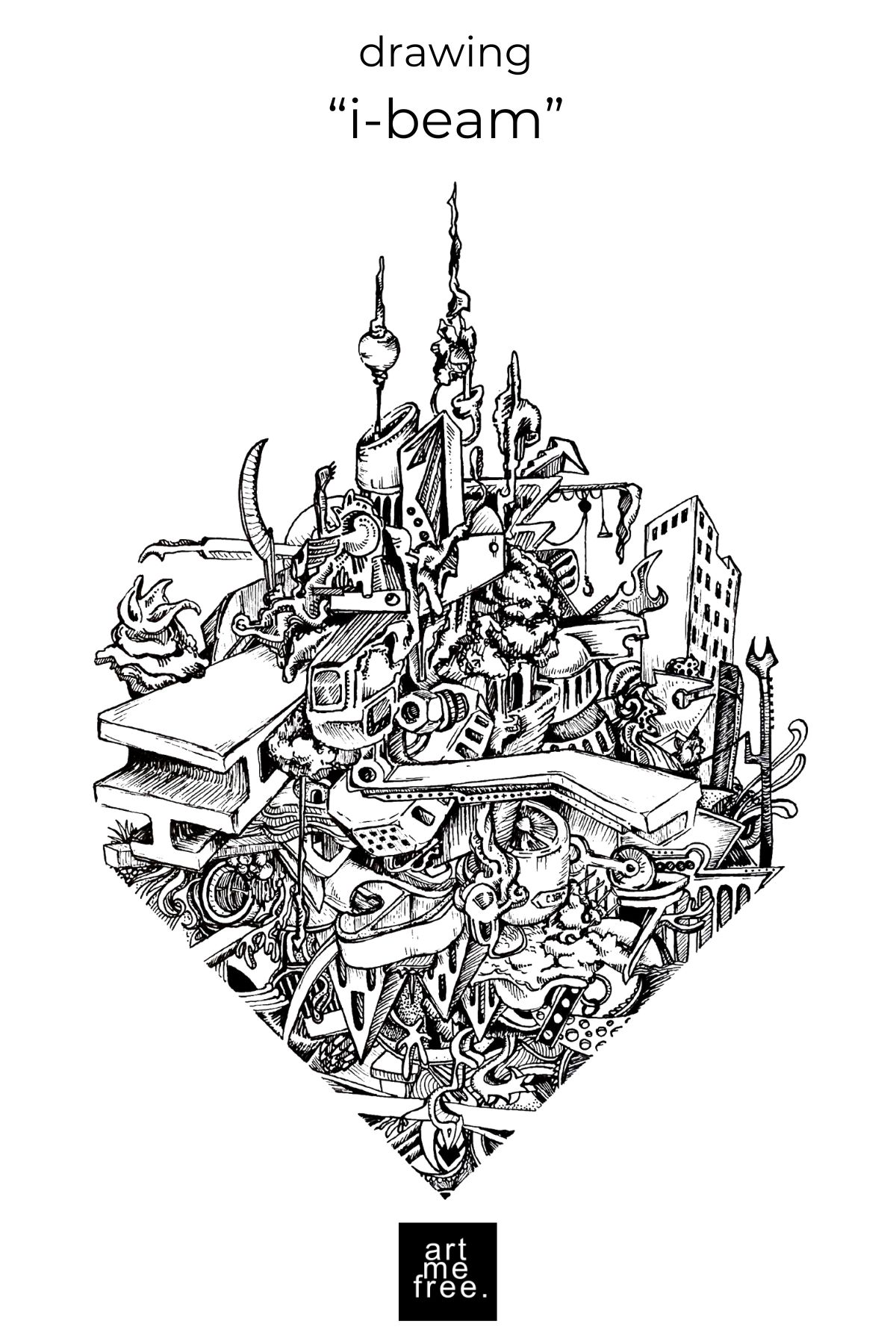
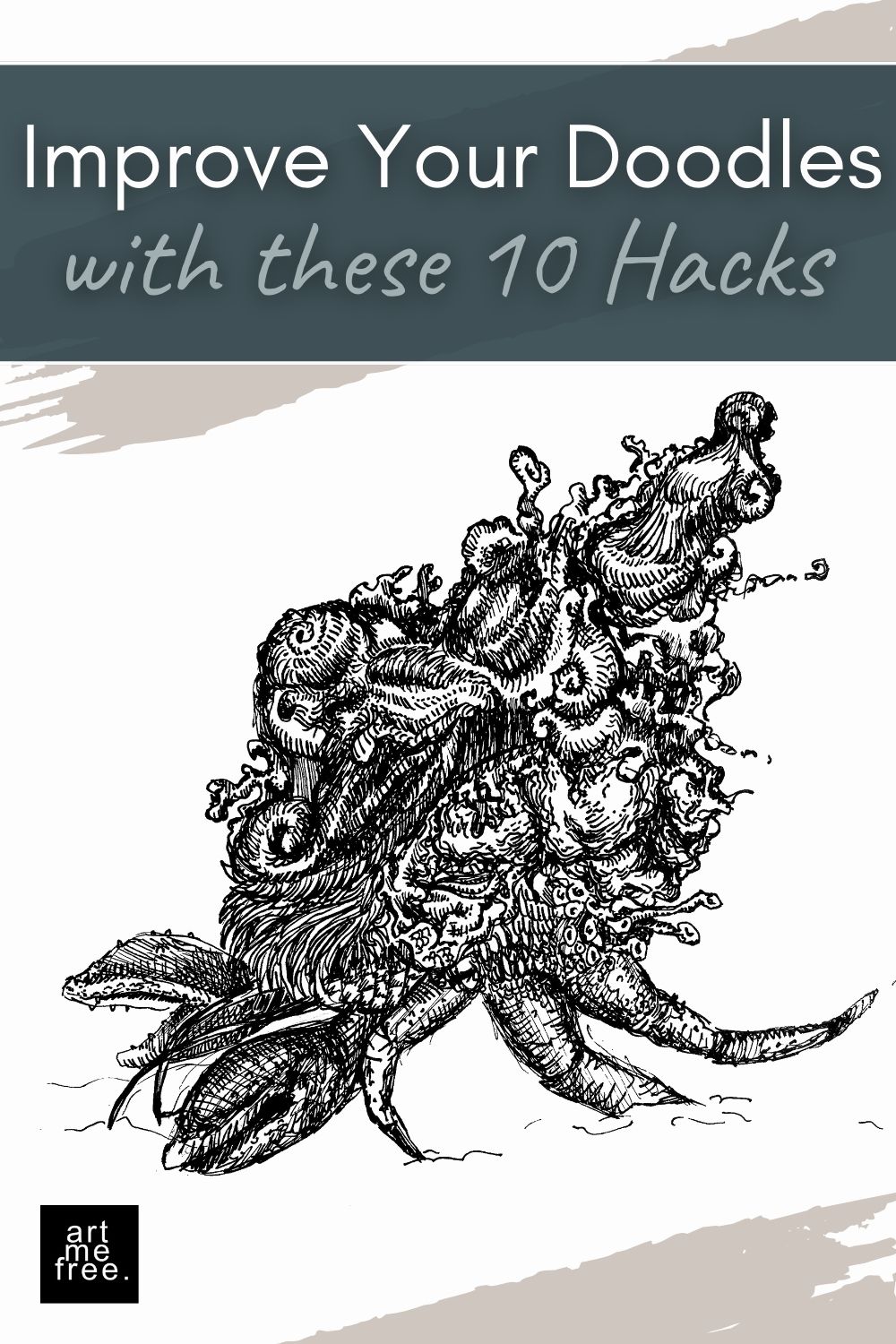
One of the easiest ways to make a doodle look more dynamic is by varying line thickness. You can:
Playing with line weight gives your doodles more depth and makes them more visually engaging.
Begin your doodle as usual, then turn the page upside down and continue drawing.
Flipping the page forces your brain to see shapes in a new way and helps break predictable patterns. It can also lead to unexpected compositions and new ideas.
In my drawing “Rupture,” I kept turning the paper while doodling, and for a long time, I didn’t know which side was the top or the bottom. This process led to an organic, balanced composition that could work in multiple orientations.
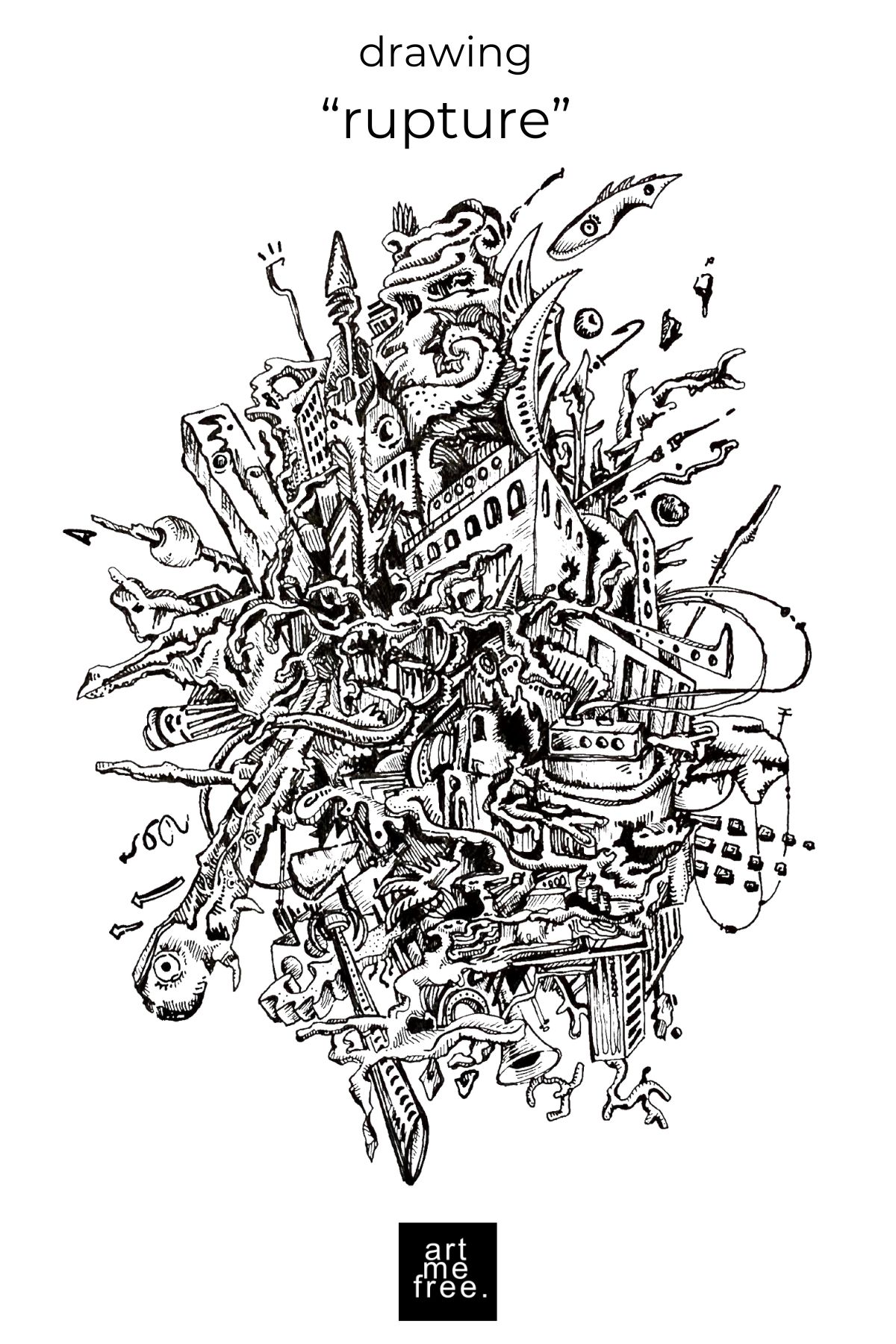
Sometimes, having too much time makes you overthink. Set a timer for five minutes and see what you can create under pressure.
This forces you to doodle freely and gets rid of perfectionism.
Instead of beginning with a blank page, fill some areas with black ink or marker first. Then, look at the spaces between them and see what emerges. Let the negative space guide your doodle.
This technique is exactly how my drawing “floating” came to be. By working around dark areas, I was able to let shapes and structures naturally emerge from the contrast.
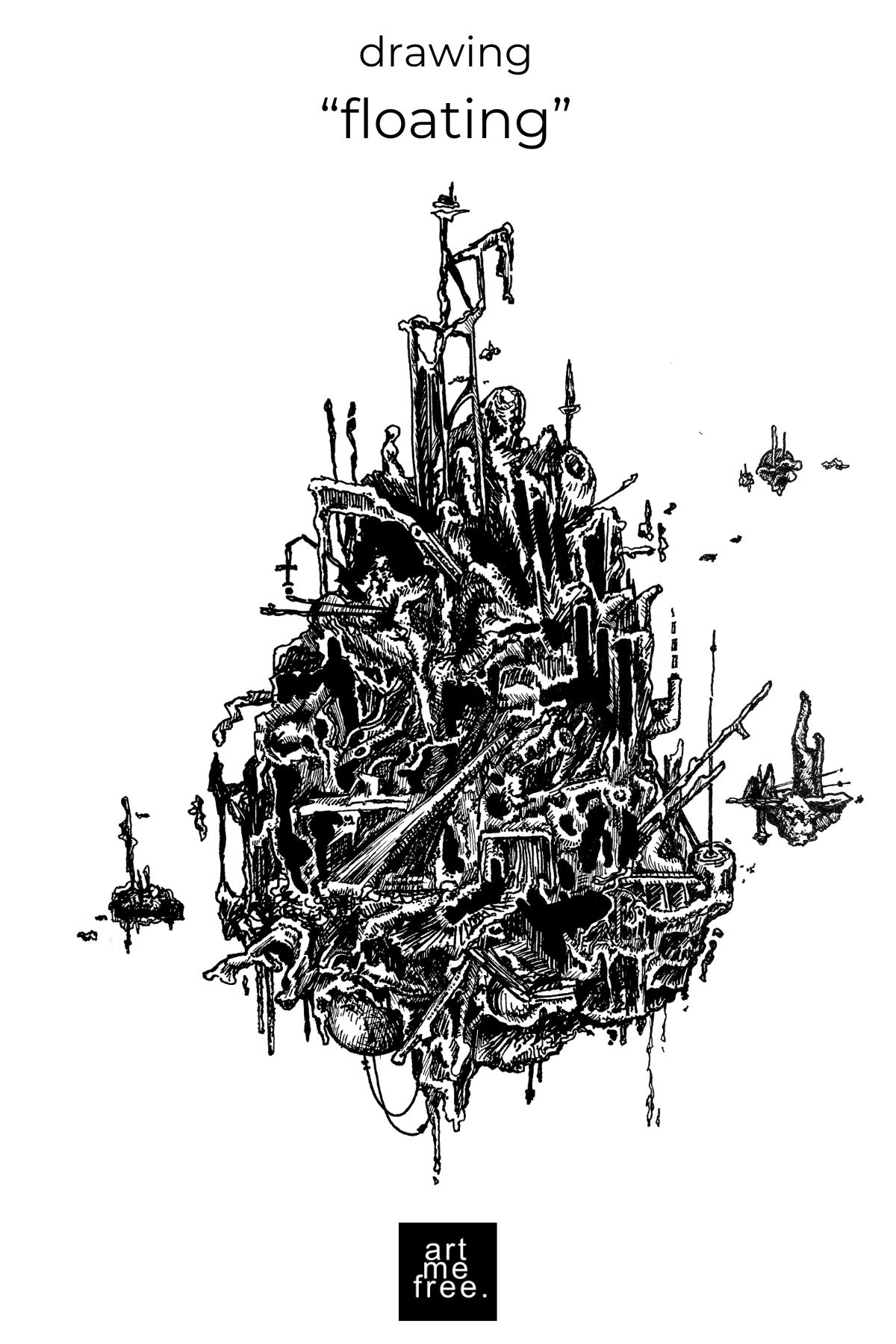
Take an old drawing or even a random scribble, and start doodling over it. You can:
This technique helps push creativity forward while making sure nothing goes to waste.
Challenge yourself to fill an entire page without using a single straight line. The lines should be organic, sketch-like, and not controlled. Let them flow naturally, without trying to make them precise.
This approach results in more dynamic and expressive doodles, and it’s a great way to loosen up. My drawing “coming home” is a good example of this technique, where the lines create movement and depth without rigid structure.
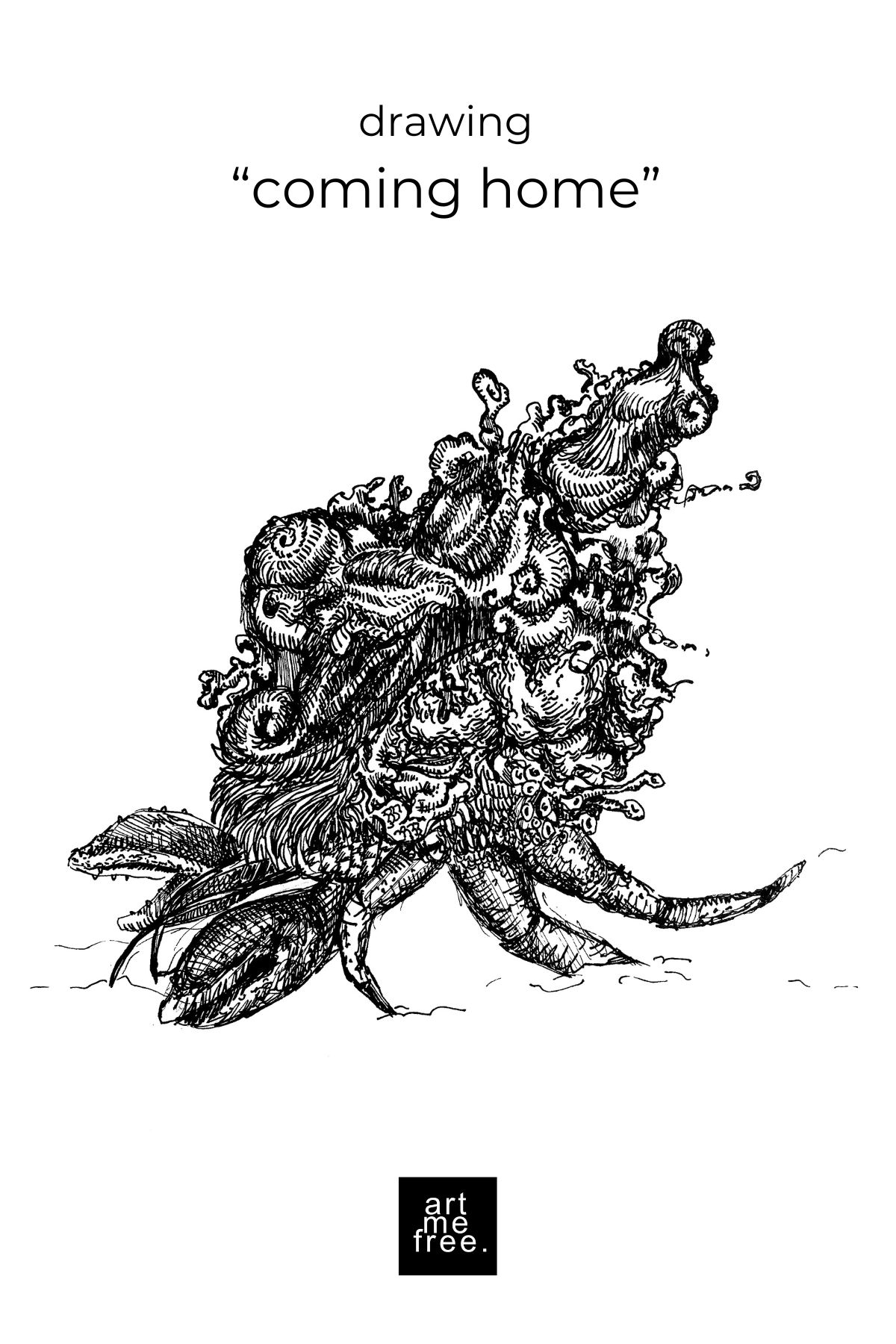
Create an unpredictable starting point by spilling some ink or watercolor onto paper. Once it’s dry, study the shape and turn it into a doodle.
This is a great way to loosen up, experiment, and let spontaneity guide your creativity.
Doodling isn’t just about repetition—it’s about exploring new techniques, challenging yourself, and allowing creativity to flow.
By using these ten simple techniques, you can:
Try out a few of these tips today and see how they change the way you doodle.
Save this post on Pinterest for later and check out more doodle inspiration in the artmefree gallery.
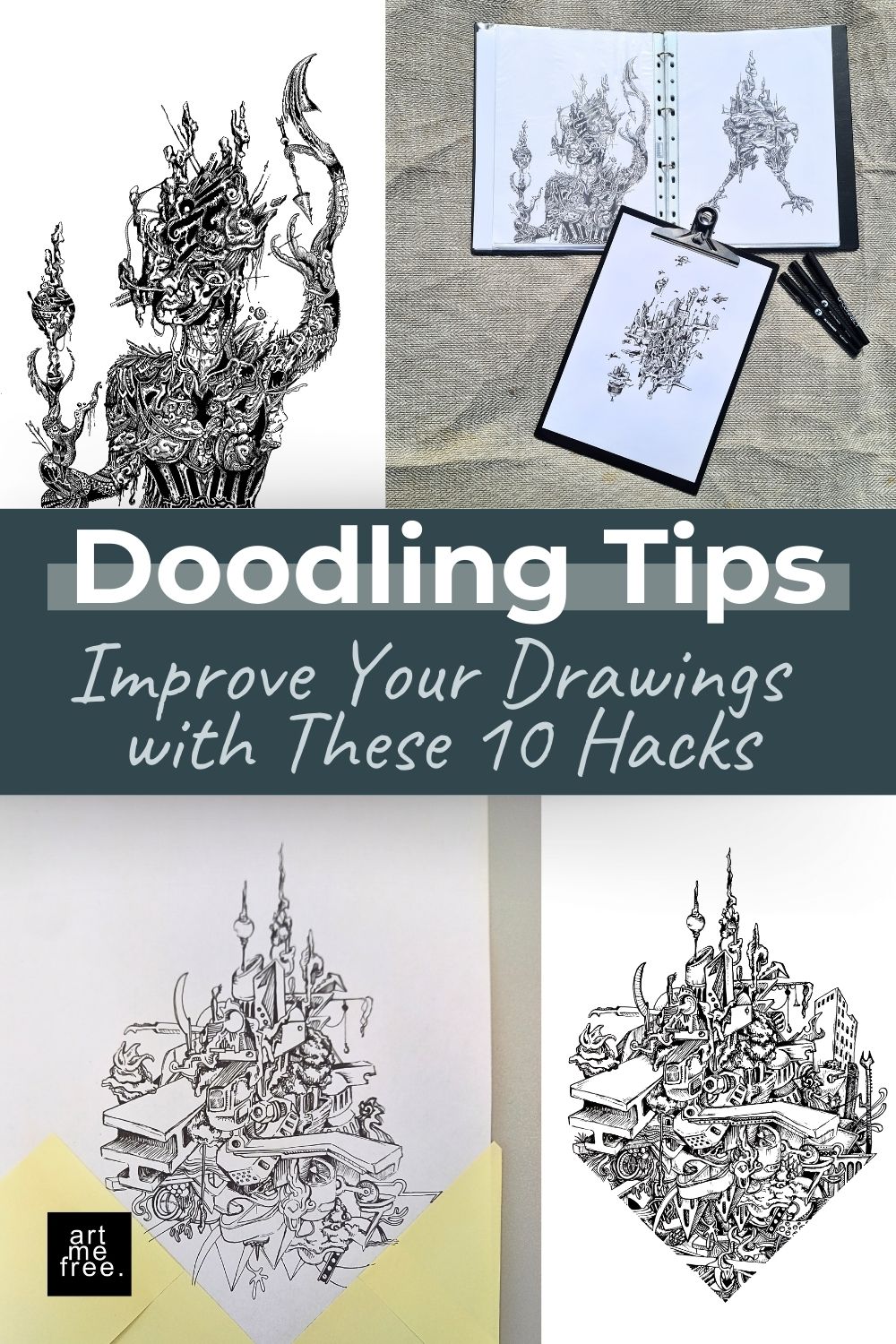


To provide you with an optimal experience, we use technologies such as cookies to store and/or access device information. If you consent to these technologies, we may process data such as browsing behavior or unique IDs on this website. If you do not give or withdraw your consent, certain features and functions may be impaired.